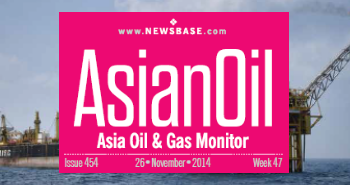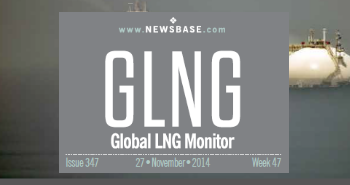Global LNG demand to surge 60% by 2040 on Asian economic growth

Global demand for LNG is expected to rise by around 60% by 2040, driven by economic growth in Asia, emissions reductions in heavy industry and transport and the increasing energy requirements of AI, according to Shell’s LNG Outlook 2025, released on February 25.
Industry forecasts now project LNG demand reaching between 630-718mn tonnes per year by 2040, representing an upward revision from Shell’s 2024 outlook, which placed consumption by that year at 625-685mn tonnes, but also a greater degree of uncertainty. Its 2023 outlook estimated 2040 demand at 650-700mn tonnes.
The report highlights LNG’s continued role in the global energy transition, supporting power generation, heating, cooling and industrial processes.
“Upgraded forecasts show that the world will need more gas to meet development and decarbonisation goals,” said Shell’s senior vice president for LNG marketing and trading, Tom Summers. “LNG will continue to be a fuel of choice because it’s a reliable, flexible and adaptable way to meet growing global energy demand.”
Despite rising demand projections, global LNG trade grew by just 2mn tonnes in 2024, marking the smallest annual increase in a decade, as constrained new supply development limited expansion. Total LNG trade reached 407mn tonnes during the year.
However, supply growth is expected to accelerate, with more than 170mn tonnes of new LNG capacity expected to come online by 2030. Much of this will come from Qatar and the US, with the latter projected to extend its lead as the world’s largest LNG exporter. By the end of the decade, US LNG exports could reach 180mn tonnes annually, accounting for a third of global supply.
The timing of new LNG project start-ups remains uncertain, potentially leading to further market volatility in the coming years.
Asia continues to lead global LNG demand growth, with China significantly expanding its LNG import capacity. The country aims to connect 150mn people to piped natural gas by 2030 to support rising consumption.
India is also ramping up its gas infrastructure development, with plans to add gas connections for 30mn people over the next five years. The country recorded a 20% rise in LNG imports in 2024, reaching 27mn tonnes, as it sought to meet surging power demand driven by extreme summer temperatures.
Europe's LNG imports declined by 23mn tonnes in 2024, a 19% drop from the previous year, as strong renewable energy generation and a sluggish recovery in industrial gas demand reduced dependency on LNG.
However, towards the end of the year, cold winter conditions and lower wind power output resulted in strong withdrawals from gas storage. The situation was exacerbated by the expiration of Russian pipeline gas flows to Europe via Ukraine at the end of last year, which contributed to a late-year rise in LNG prices.
Europe is expected to increase LNG imports in 2025 to replenish depleted gas storage levels and manage supply security amid the continued transition away from Russian pipeline gas.
The maritime industry is increasingly turning to LNG as a shipping fuel, with demand from the sector projected to reach 16mn tonnes per year (tpy) by 2030, a 60% increase from previous forecasts. LNG’s role in reducing emissions in shipping and road transport is gaining traction, while future developments in bio-LNG and synthetic LNG offer pathways for further carbon reduction.
Europe is also exploring ways to repurpose existing gas infrastructure for bio-LNG, synthetic LNG and eventually green hydrogen, as the continent seeks to balance the intermittent nature of renewable energy sources.
The LNG market faced tight supply conditions in 2024, with spot prices dropping early in the year to their lowest levels since 2022 before rebounding by mid-year due to delays in new project development.
China capitalised on lower prices, importing 79mn tonnes of LNG in 2024, while India's demand surged to record levels.
With global energy demand rising, the pace of new LNG developments and the ability of producers to meet projected growth targets will be key factors in determining market dynamics in the years ahead.








Follow us online